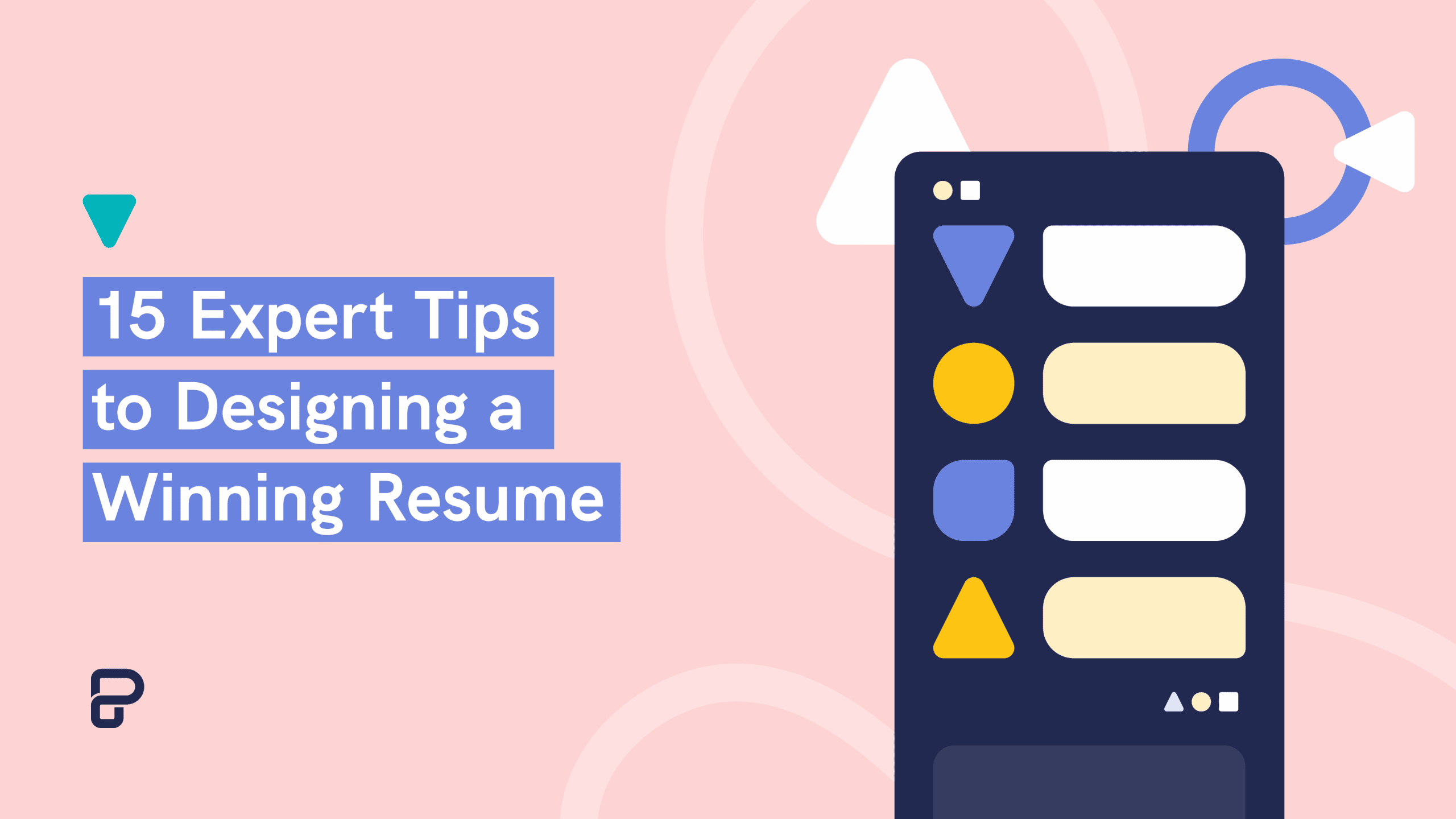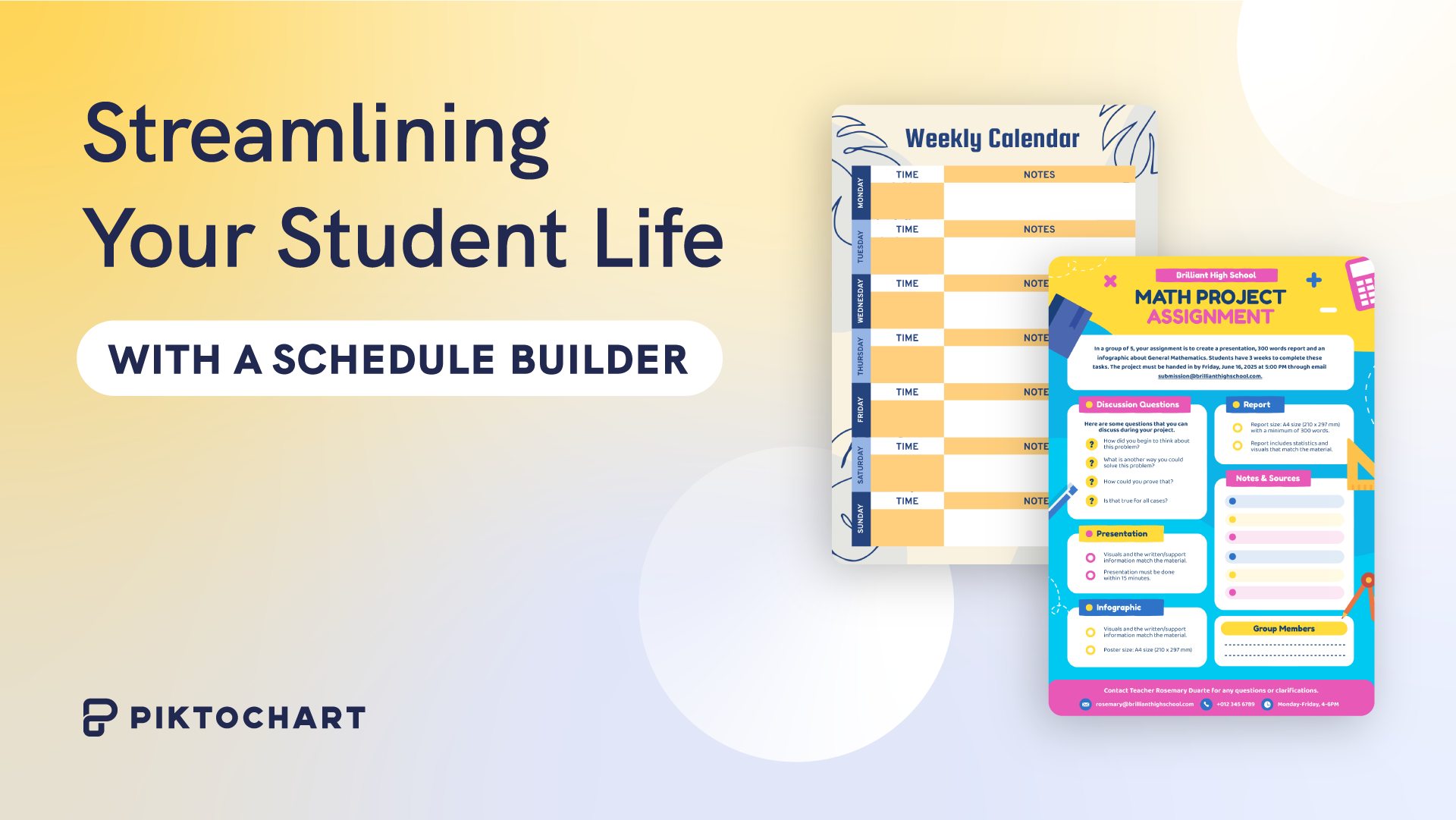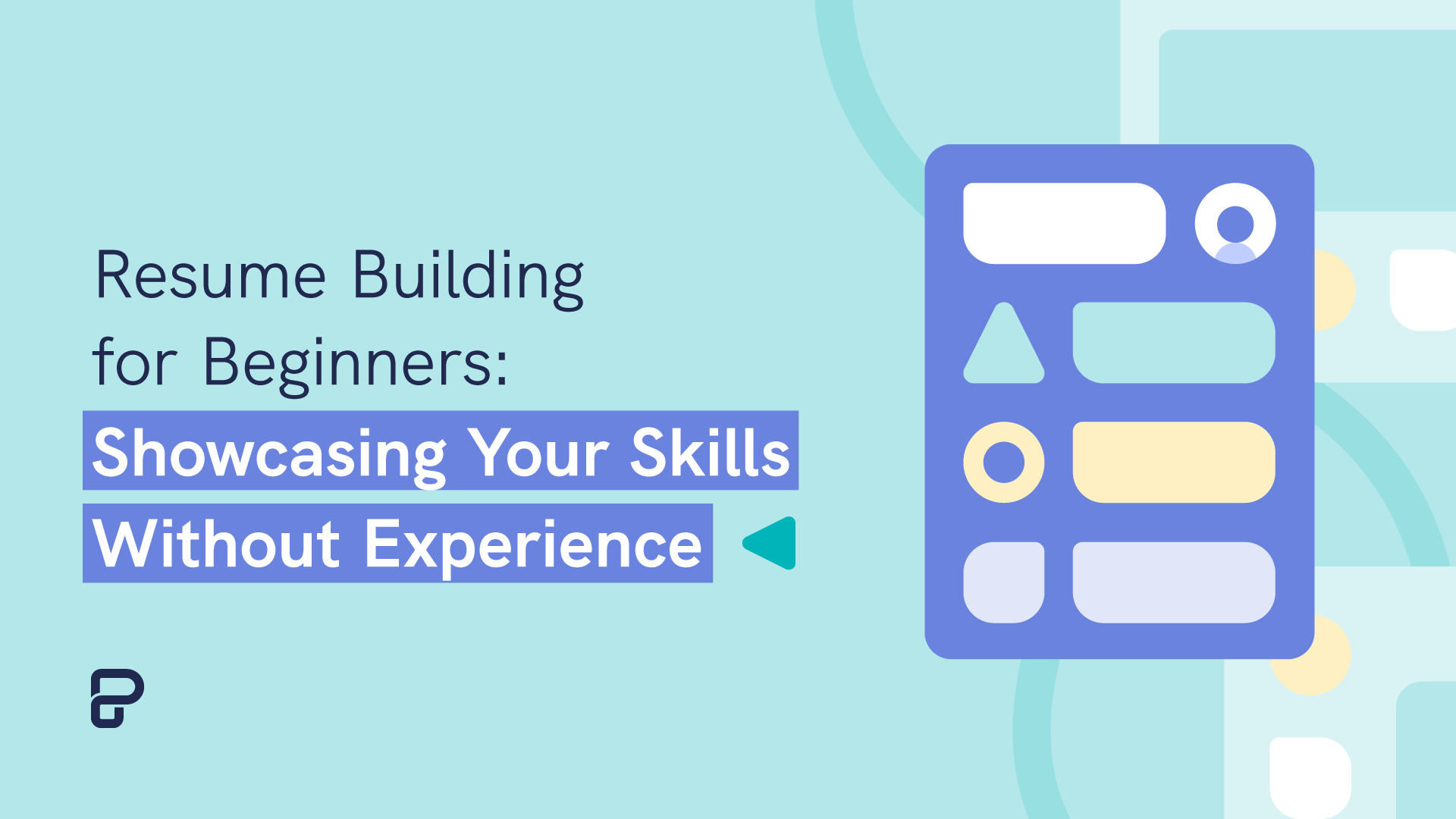Job hunting.
It’s a full-time job, and standing out in a sea of identical-looking resumes requires a bit of effort.
You might have a lot of relevant experience, but if your resume is not eye-catching – you run the risk of getting passed up. You need to find a way to stand out.
And if you’re applying for that dream job without fulfilling all the required qualifications, there might be a different way to leverage what you’ve got.
How? A well-designed resume.
This guide to resume design highlights expert tips from hiring managers, recruiters, and HR professionals.
Whether you’re applying for your first job or planning a career change, keep reading for resume design ideas and professional resume templates that you can edit and download in minutes.
To follow along and get access to free resume templates, create a free Piktochart account to make your first (or second!) creative infographic resume.
Table of contents
- Why you need to be thoughtful about your resume design
- Tip #1: Make your job skills as modern as you are
- Tip #2: Make sure your CV is mobile-friendly
- Tip #3: Consider your target industry when choosing color schemes
- Tip #4: Use your resume to tell a story
- Tip #5: Give a (design) nod to your line of work
- Tip #6: Use your resume as a personal branding document
- Tip #7: Use design that’s right on top of the trends
- Tip #8: Choose the right font for your resume
- Tip #9: Emphasize your contact information section visually
- Tip #10: Make your content as skimmable as possible
- Tip #11: Make your resume printable
- Tip #12: Use fun design elements in moderation
- Tip #13: Consider your layout
- Tip #14: Think about hierarchy
- Tip #15: Mind your structure
- 10 professional resume templates you can download
Why you need to be thoughtful about your resume design
You’re probably wondering why the fuss about the look of your resume.
Why care about resume layout and content when you’re highly qualified for the job?
The truth is that recruiters and hiring managers won’t know about your extensive work experience, impressive portfolio, or educational background unless you find a way to stand out from the rest of jobseekers.
You need a visually interesting resume that will get the recruiting team’s attention and prompt them to review it.
Not convinced?
Check out the recruitment yield pyramid from Workable below. It visualizes the standard recruitment process that most companies have.
Out of 240 applications, only 15 candidates were selected for a first interview, so that’s around 6 percent. An infographic resume can help increase your chance to be a part of the 6 percent!
The good news is you don’t have to be a professional designer to make your resume pop and get noticed by potential employers.
Let’s get started with the expert tips for resume design below. Each tip is also loaded with resume design ideas and examples to inspire you.
1. Make your job skills as modern as you are
Beyond the usual marketing, design, and coding skills, your employer also wants to know if you’ll be a cultural fit and a team player – and these depend a lot on your soft skills.
We might even call these 21st century job skills, a combination of social and process skills, and it is important to include them alongside your technical abilities.
Here are a handful that might be a good fit:
2. Make sure your CV is mobile-friendly
While it’s worth pointing out that most headhunters out there are tapping away on LinkedIn via their laptops, you should consider that your CV and cover letter might be opened on a smartphone. And that’s where a mobile-responsive document really comes into play.
Here are four things to keep in mind when creating a mobile-friendly CV:
- Use typography that would be easy to view on any device.
- Test to ensure that text is readable. Never go over 2-3 lines of text.
- Include your professional title, career highlights, career summary, and qualifications at the top of your CV.
- Add hyperlinks to your portfolio or social links.
3. Consider your target industry when choosing color schemes
Of course, you won’t always be trying to create a mobile-friendly resume, especially when you’d like to get a bit creative.
Color schemes are a great way to create a certain kind of mood in your resume, which could attract the attention of the right HR manager.
One way to do this is to match your resume’s color scheme to the industry that you’re looking to be a part of. For instance, if you are applying for a role in more conservative industries such as banking or law, you might want to go with black or darker tones to show you mean business.
If you’re applying to a creative agency or a tech startup, you’ll have a lot more flexibility in terms of the color schemes you can use. Don’t be afraid to go bright to attract eyeballs.
With Piktochart Visual, you can either select from our available color schemes or make your own. Try Piktochart for free.
4. Use your resume to tell a story
To really capture the attention of the hiring manager’s eye, you’ll benefit from telling a story with your resume.
Believe it or not, you’ll actually be able to use storytelling tactics that are old as time to do this.
Here are a handful of resume storytelling tips that apply very well to resume writing:
- Include characters – You are the star of the show, but remember to include your boss, customers, employees, and co-workers. Create emphasis on how your role operated in relation to them. Who did you report to? How many people did you manage?
- Don’t forget the setting – Could be the company you’ve worked for but also the division, department, region, or team. This gives context, but can also show things such as international experience.
- Make sure your resume has a plot – Perhaps all the odds were against you but you solved the problem and achieved success (dragon slaying). Or you worked with others to achieve a major goal while overcoming challenges along the way (the hero’s quest).
- Don’t skimp on the conflict – Giving context to the conflict you’ve faced in your career shows growth and initiative. Did you redesign an inefficient process or reverse declining sales? Make sure you talk about it!
Immanuel, our former content specialist told a wonderful story in his beautiful resume by creating an interactive application that was sleek, fun, and well-designed.
5. Give a (design) nod to your line of work
Consider your resume as an extension of yourself and the work that you do.
So why not use design elements that will give a nod to your profession?
For example, if you work in the publishing industry, you can try to give your resume a “bookish” vibe which can be accomplished by:
- Structuring your resume layout to look like a book page
- Using classic typography such as Caslon

6. Use your resume as a personal branding document
A personal brand is a way of marketing yourself through a number of avenues – which is usually done by crafting a cohesive persona through social media accounts and a website.
The idea here is to create an online identity that helps you put your best foot forward, especially when it comes to landing professional opportunities.
So why can’t your resume also be a part of your personal branding strategy?
Here are a handful of tips that you can use to build a personal brand through your resume.
- Create a personal logo for yourself using a symbol or even just your initials. See Aaron Johnson’s personal branding logo in the image below.

- Consistency is key. Make sure that you set rules for the layout of your resume, whether it’s in font choice, text sizing, and alignment.
- Choose a color scheme that reflects your personal brand.
For example, Matteo in the example below, is using bright colors such as yellow and orange as a part of his personal brand as an illustrator and designer.
7. Use design that’s right on top of the trends
If you are applying for jobs in creative industries, you will be competing with a sea of candidates that will be thinking out of the box when it comes to their application.
In order to stay ahead of the pack, you should consider designing your resume in a way that is spot on with graphic design trends to avoid looking outdated.
For instance, flat design is currently right on-trend with website and apps. Using this type of design in your resume, like in the example below, will communicate to hiring managers that you are on top of your design game.
8. Choose the right font for your resume
While you want to make sure your resume is legible, you also want to stand out while everyone else is playing safe with the likes of Arial or Times New Roman.
The right font can help you stand out, and also keep eyeballs from bouncing away from your resume.
So what should you keep in mind when selecting a font?
- Keep your font sizes between 11 and 13 points. You want a happy balance between being able to fit enough items into your resume, while it still being legible.
- Keep font sizes consistent – headers should be all the same size for example.
- Serif fonts work well for digital fields or roles that involve creative work, while sans serif fonts are a better fit for more conservative industries. This is because serif fonts generally have an extra design and stroke embellishment at the end of letters, while serif fonts keep it simple.
9. Emphasize your contact information section visually
Recruiters apparently spend just seven measley seconds reviewing your resume.
To make sure that your resume gets picked out of the crowd, and keeping those seven seconds in mind, why not place a lot of visual emphasis on your contact information section?
Here are a number of things you can do to make your contact info section stand out:
- Use icons (we have lots of them in Piktochart!) to add live links to your personal website, social media, email address, and portfolio.
- Use white space to draw the recruiter’s eye into your contact information.
- Use color – you can change the color of the text itself, or create a new background color just for your contact info section.
In the example below, Paolo Pettigiani uses a pop of color and white space for his contact info page.
10. Make your content as skimmable as possible
Make your content as easy as possible to skim through so that readers should be able to pick up your strengths and essential information as quickly as possible.
Here are a few ways to make your resume skimmable:
- Use columns to organize your resume that is bursting at the seams with info. You can also experiment with using columns that are different sizes.
- Format your content by using headings, subheadings, bullet points, and white space.
- Try using an infographic and help those text-weary recruiters by using visuals instead.
Martin Suster’s infographic resume below is a good example.
11. Make your resume printable
Despite dressing up your resume with a handful of design elements, visuals, and colors, it would be a good idea to make your resume printable.
A printable resume is important for those interviewers that like to avoid using their laptop during the interview.
It also makes your resume as user-centered as possible, and making it printable is one way to focus on the user experience of your resume.
Here are a few things you should do for a print-friendly resume:
- Make sure that your resume can be printed in black and white.
- Use a font that is legible; 11 to 13 points will work.
- Minimize the number of pages of your resume – 1 to 2 pages is fine, but 15 is not.
- Having a personal branded logo on your resume is a nice touch, but make sure your name is still on it.
- Save your printable resume in PDF.
It is still possible to make your resume visually appealing while making it also printable, like in the example below.
12. Use fun design elements in moderation
While design elements such as flat icons, images, and bright colors could help your resume stand out from the pack, using too many can cause a visual overload for the viewer and could actually distract from the actual purpose of the resume.
To avoid using an overwhelming amount of design elements, here are a handful of tips to be mindful of:
- Use only a small handful of colors, as too many can be distracting.
- Work with the basic shapes that can be found within your word processor.
- Consider using graphic lines to add personality.
The example below uses just one color and graphic lines to create a neat and organized resume.
13. Consider your layout
Layout is an important factor when putting your resume together.
Whether you’re after a role at a creative agency or a bank, keeping your resume organized and tidy should be your number one priority.
Here are a handful of things to consider when it comes to your resume layout:
- Think about alignment when filling in your job duties. All your headers and bullet points should line up, otherwise it creates a very confusing visual experience.
- Try using text boxes, which you’ll be able to easily drag and drop around your resume page – making layout creation a lot easier.
- Keep your audience in mind while thinking outside of the box if possible. While traditional roles will expect a fairly standard resume, jobs in creative fields will allow you to roll up your sleeves a bit more.
The landscape layout of the resume below makes it different from the others, helping it stand out in a sea of poorly designed resumes with portrait layouts.
14. Think about hierarchy
Another element to consider when putting together your resume is hierarchy.
The general rule here is that the most important information in your resume should go towards the top, with the more non-essential information in the bottom.
When it comes to hierarchy of your resume design, here are a few things to take note of:
- Create a profile at the top of the resume, under your contact information, which summarizes your job history, skills (technical/soft), and where your expertise lies. Don’t forget to include an eye-catching header.
- If you have a lot of work experience, create two sections for your list of past and current jobs and projects. Label one “relevant experience” which pertains to the new job you’re applying for, and one that is “work experience” which will house the remainder of your roles.
- Also worth considering is where you place your “education” section. If you are a fresh grad (bachelors, masters, or PhD. even), you definitely want to put your education near the top of your resume. If your work experience carries more weight, then you can keep your education near the end.
The resume below is an example of a clear and succinct CV, along with a well-thought-out data visualization of the resume’s skills section.
15. Mind your structure
If you think of your resume as something to be built, then you’ll understand the important of structure.
A great way to approach structuring your resume is by using a “grid structure,” which introduces columns, rows, visual dividers, and white space.
A grid keeps all the data that you’re presenting organized and makes skimming a lot easier. The example below shows a resume organized with a grid structure.
Level up your resume design with these 10 customizable resume templates
Now that you’re an up-and-coming expert in resume design and writing, it’s time to apply this new knowledge to your CV and make your best resume ever.
Our designers have created a batch of professional resume templates to help you put your best foot forward when it comes to applying for your next job.
Whether you’re a marketer, data scientist, or financial analyst – we’ve got the perfect resume template for you.
Don’t forget to create a Piktochart account (it’s free) so that you can give our resume maker a try and easily customize the CV templates below.
1. One-page simple resume template
2. Customizable one-page resume template for social media specialists
3. Minimalist and clean resume template
4. Black and white resume template
5. Resume template with bold header
6. Formal resume design template
7. Three-page creative resume template
8. Modern resume template
9. Two-page professional resume template
10. Casual resume template
Give some of these resume design templates a try, save time, and get one step closer to the job of your dreams.
We also made the additional resources below to help you create your best resume ever, get called for an interview, and bag your dream career:
Editor’s note: This blog post was originally published on May 6, 2018 and updated on April 26, 2022 for relevance, new templates, and comprehensiveness.




























